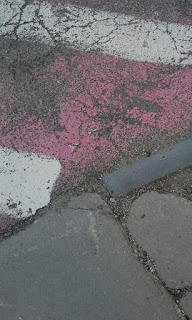112. After class
ended on the following Saturday I put this question to her. “Mrs. Festini,” I
said, is it legal for me to cast these manhole covers, and say it is a
sculpture that I created.
113. Because I never created the shapes in the first place, and I
could never have designed anything like it, even if my life depended on it.”
114. What I got out of Mrs. Festini, bless her soul, was a
lecture about Pop Art, and the works of Andy Warhol. I am not going to repeat
all that she said, because I realize by now that this idea is very well know
about, and I am sure you have heard all about it.
115. Warhol did not design any soup cans, but she explained how
he “made us seen things like labels in a new way”, and that is why it was art.


















































